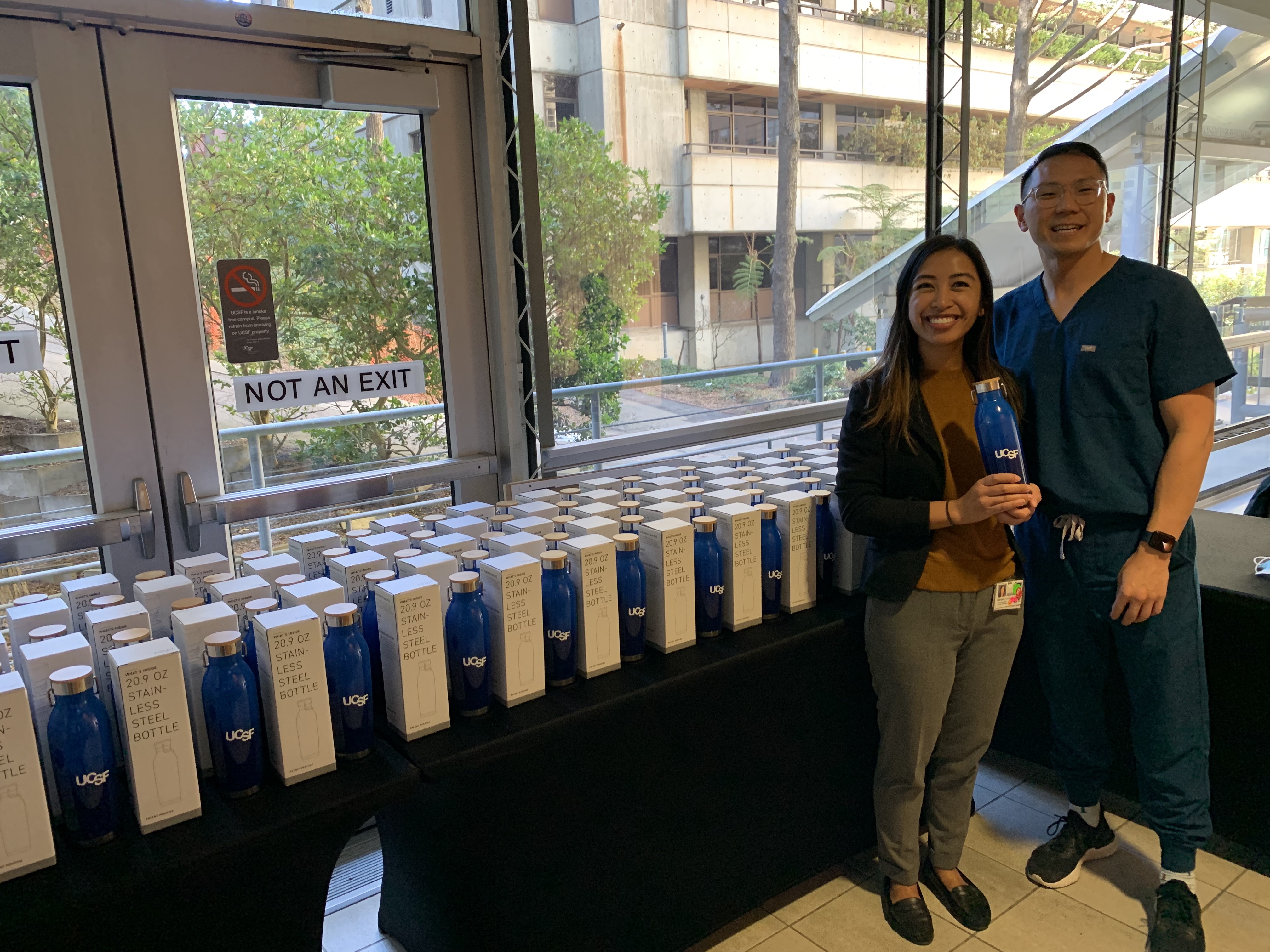When compared to market options, tap water lacks carbonated zing, flavor, and variety. It’s boring and plain....at first taste.

Alfred Li, DDS, UCSF School of Dentistry, who is serving as the Global Food Initiative Fellow supporting the Sustainability and Wellness and Community departments looked at all the reasons tap water, especially the exceptional water in San Francisco, is worthy of our admiration and consumption.
Reasons and Proof
- Access to free, clean drinking water promotes health equity
- UCSF implemented the Healthy Beverage Initiative in 2015 to eliminate the sale of sugar-sweetened beverages on campus
- Providing accessible, clean drinking water may help to change drinking habits further away from sugary beverages
- In the past year, UCSF has installed water bottle fillers in nearly all its buildings, and the locations of these hydration stations can be found on the UCSF Mobile App
- Drinking tap water is beneficial for oral health
- Tap water in many cities, such as San Francisco, is fluoridated at low levels
- Drinking fluoridated water keeps teeth strong by hardening the enamel layer and making it more resistant to decay
- This reduces cavities by about 25% in children and adults
- Fluoride supplementation is implemented at a level that is safe for humans and animals
- San Francisco tap water provides one of highest water quality in the country and is sourced directly from Sierra snowmelt
- UCSF’s tap water is tested over 10,000 times before it gets to our hydration stations, while bottled water is not required to be tested
- Community water fluoridation is considered one of the top 10 public health achievements of the 20th century for its cost-effectiveness, equitability, and safety
- Drinking tap water helps protect our planet
- Bottled water is generally contained in recyclable bottles
- However, many of these plastic water bottles end up in the landfill and release greenhouse gases as they break down- only about 29% of plastic containers were recycled in the U.S. in 2018
- The process of recycling plastic bottles requires a significant amount of energy
- The demand for plastic water bottles, which are made from fossil fuel, contributes to climate change
- Reduce carbon footprint and environmental impact by using a refillable water bottle
- By using a refillable bottle, you can save about 10 pounds of plastic waste a year
Sources
Healthy Beverage Initiative, UCSF. https://campuslifeserviceshome.ucsf.edu/wellness-and-community/programs/healthy-beverage-initiative
Water fluoridation Factsheet. San Francisco Public Utilities Commission (SFPUC). https://sfpuc.org/sites/default/files/accounts-and-services/water-quality/fluoride_what-is_factsheet.pdf
Centers of Disease Control and Prevention (CDC). https://www.cdc.gov/fluoridation/index.html
Facts and Figures about Materials, Waste and Recycling. United States Environmental Protection Agency (EPA). https://www.epa.gov/facts-and-figures-about-materials-waste-and-recycling/plastics-material-specific-data
Exploring Comparative Energy and Environmental Benefits of Virgin, Recycled, and Bio-Derived PET Bottles. Benavides, et al. ACS Sustainable Chemistry & Engineering 2018 6 (8), 9725-9733. https://pubs.acs.org/doi/full/10.1021/acssuschemeng.8b00750
When compared to market options, tap water lacks carbonated zing, flavor, and variety. It’s boring and plain....at first taste.